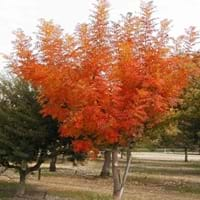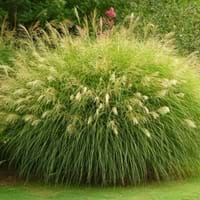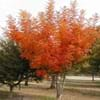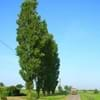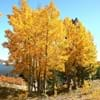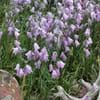Life Span
Perennial
Perennial
Origin
China
Eastern Asia, China, Japan, Korea
Types
Not Available
not available
Habitat
Mountains, Rocky areas
Lower slopes, marshes, Mountain Slopes
USDA Hardiness Zone
6-9
4-9
Sunset Zone
4, 5, 6, 7, 8, 9, 10, 11, 12, 13, 14, 15, 16, 17, 18, 19, 20, 21, 22, 23
2a, 2b, 3a, 3b, 4, 5, 6, 7, 8, 9, 10, 11, 12, 13, 14, 15, 16, 17, 18, 19, 20, 21, 22, 23, 24
Habit
Oval or Rounded
Clump-Forming
Flower Color
Red, Green
Red, White
Flower Color Modifier
Bicolor
Bicolor
Fruit Color
Red, Blue, Green, Dark Blue, Black
Non Fruiting Plant
Leaf Color in Spring
Green, Light Green
Green, Dark Green
Leaf Color in Summer
Green, Dark Green
Light Green
Leaf Color in Fall
Red, Orange, Pink
Green, Dark Green, Gold, Tan
Leaf Color in Winter
Not Available
Gold, Tan
Leaf Shape
Pinnate
Lanceolate
Plant Season
Summer, Fall
Spring, Summer, Fall, Winter
Sunlight
Full Sun, Partial Sun
Full Sun
Type of Soil
Clay, Loam, Sand
Clay, Loam, Sand
The pH of Soil
Acidic, Neutral, Alkaline
Acidic, Neutral, Alkaline
Soil Drainage
Well drained
Average
Bloom Time
Early Spring, Spring
Fall, Late Fall
Tolerances
Pollution, Drought, Soil Compaction
Pollution, Drought
Where to Plant?
Ground
Ground, Pot
How to Plant?
Divison, Seedlings, Stem Planting, Transplanting
Divison
Plant Maintenance
Medium
Medium
Watering Requirements
Average Water Needs, Water once every two or three weeks, Water when top layer of soil becomes dry
Do Not over Water, Keep ground moist
In Summer
Lots of watering
Lots of watering
In Spring
Moderate
Adequately
In Winter
Average Water
Average Water
Soil pH
Acidic, Neutral, Alkaline
Acidic, Neutral, Alkaline
Soil Type
Clay, Loam, Sand
Clay, Loam, Sand
Soil Drainage Capacity
Well drained
Average
Sun Exposure
Full Sun, Partial Sun
Full Sun
Pruning
Remove damaged leaves, Remove dead branches, Remove dead leaves
cut main flower spike, Remove dead leaves
Fertilizers
All-Purpose Liquid Fertilizer
All-Purpose Liquid Fertilizer, Fertilize when new
Pests and Diseases
Insects, Red blotch, Rodent
Healthy tree, Red blotch, Rust
Plant Tolerance
Drought, Frost
Drought, Pollution
Flowers
Insignificant
Showy
Flower Petal Number
Not Available
Single
Foliage Texture
Medium
Fine
Foliage Sheen
Glossy
Matte
Invasive
Sometimes
Sometimes
Attracts
Birds
Not Available
Allergy
no allergic reactions
Asthma
Aesthetic Uses
Beautification, Landscape Designing, Showy Purposes
Cottage Garden, Showy Purposes
Beauty Benefits
Not Available
Not Available
Environmental Uses
Air purification
Air purification, Provides ground cover
Medicinal Uses
No Medicinal Use
No Medicinal Use
Part of Plant Used
Seeds, Stem
Whole plant
Other Uses
Application in Furniture, Decoration Purposes, Showy Purposes, Used in biomass, Used in Furniture
Used as Ornamental plant
Used As Indoor Plant
No
No
Used As Outdoor Plant
Yes
Yes
Garden Design
Shade Trees, Street Trees
Dried Flower / Everlasting, Container, Cutflower, Feature Plant, Foundation, Mixed Border, Screening / Wind Break
Botanical Name
PISTACIA chinensis
MISCANTHUS sinensis 'Gracillimus'
Common Name
Chinese Mastic, Chinese Pistachio
Eulalia, Japanese Silvergrass, Maiden Grass
In Hindi
चीनी पिस्ता
maiden grass
In German
chinesische Pistazie
Mädchen Gras
In French
pistache chinois
herbe de jeune fille
In Spanish
pistacho chino
hierba doncella
In Greek
Κινέζοι Φιστίκι
παρθενική γρασίδι
In Portuguese
Pistache chinês
grama de solteira
In Polish
Chiński Pistacje
panieńskie trawy
In Latin
LENTISCUS Chinese
virgo herba
Phylum
Magnoliophyta
Magnoliophyta
Class
Magnoliopsida
Liliopsida
Order
Sapindales
Cyperales
Family
Anacardiaceae
Poaceae
Genus
Pistacia
Miscanthus
Clade
Angiosperms, Eudicots, Rosids
Not Available
Tribe
Rhoeae
Not Available
Subfamily
Not Available
Not Available
Number of Species
Not Available
Not Available
Importance of Chinese Pistachio and Maiden Grass
Want to have the most appropriate plant for your garden? You might want to know the importance of Chinese Pistachio and Maiden Grass. Basically, these two plants vary in many aspects. Compare Chinese Pistachio and Maiden Grass as they differ in many characteristics such as their life, care, benefits, facts, etc. Every gardener must at least have the slightest clue about the plants he wants to plant in his garden. Compare their benefits, which differ in many ways like facts and uses. The medicinal use of Chinese Pistachio is No Medicinal Use whereas of Maiden Grass is No Medicinal Use. Chinese Pistachio has beauty benefits as follows: Not Available while Maiden Grass has beauty benefits as follows: Not Available.
Compare Facts of Chinese Pistachio vs Maiden Grass
How to choose the best garden plant for your garden depending upon its facts? Here garden plant comparison will help you to solve this query. Compare the facts of Chinese Pistachio vs Maiden Grass and know which one to choose. As garden plants have benefits and other uses, allergy is also a major drawback of plants for some people. Allergic reactions of Chinese Pistachio are no allergic reactions whereas of Maiden Grass have Asthma respectively. Having a fruit bearing plant in your garden can be a plus point of your garden. Chinese Pistachio has no showy fruits and Maiden Grass has no showy fruits. Also Chinese Pistachio is not flowering and Maiden Grass is not flowering . You can compare Chinese Pistachio and Maiden Grass facts and facts of other plants too.
